Fleurs du Mal Magazine


Or see the index
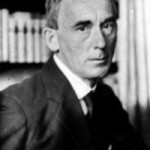
Hugo Ball
(1886–1927)
Ich liebte nicht die Totenkopfhusaren
Und nicht die Mörser mit den Mädchennamen
Und als am End die großen Tage kamen,
Da bin ich unauffällig weggefahren.
Gott sei’s geklagt und ihnen, meine Damen:
Gleich Absalom blieb ich an langen Haaren,
Dieweil sie schluchzten über Totenbahren
Im Wehbaum hängen aller ihrer Dramen.
Sie werden auch in diesen Versen finden
Manch Marterspiel und stürzend Abenteuer.
Man stirbt nicht nur durch Minen und durch Flinten.
Man wird nicht von Granaten nur zerrissen.
In meine Nächte drangen Ungeheuer,
Die mich die Hölle wohl empfinden ließen.
Hugo Ball poetry
fleursdumal.nl magazine
More in: Archive A-B, Ball, Hugo, Dada
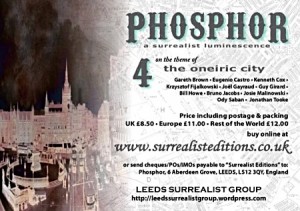 A surrealist luminescence
A surrealist luminescence
Phosphor was launched in 2008, as a substantial, high-quality journal, which has the aim of presenting contemporary creative and critical work by Leeds Surrealist Group and their friends, with essays, poetry, critique, graphic art, photography, reviews, games, enquiries . . .
Although drawing upon Surrealism’s current manifestations, both locally and internationally, Phosphor also highlights sometimes neglected aspects of its history. Each issue has a broad theme, though is not constrained by it. Phosphor followed on from the group’s Manticore/Surrealist Communication, a four-page A3 publication, which ran for eight numbers between 1997 and 2006.
Phosphor No.4 – The Oneiric City
‘We can read the language of the city streets as a dream narrative, to subject it to a form of dream-analysis even, in an attempt to better understand ourselves. But the streets change, as cities are reshaped and our oneiric sites are demolished, so the narratives themselves become like dreams, as if they had only happened while we were asleep and are remembered upon waking.’
– from the editorial, Port of Prague, by Kenneth Cox & Bill Howe
72 pages – B5 format – Spring 2015 – ISSN 1755-0009
Texts, poems, images on the theme of ‘The Oneiric City’ – including:
Kenneth Cox, Dreaming The City By Day – an account of a ludic exploration of the city undertaken by Leeds Surrealist Group
Bruno Jacobs, Notes On The Oneiric City – on the dream-like atmosphere of certain cities
Guy Girard, One City Is Another – on the superimposition of one city onto another
Krzysztof Fijalkowski, Rêvilleros – reveries on Santiago de Compostela, Nantes and Prague
Bill Howe, Into The Desert Of Mirrors And Magnifiers – a subjective commentary on a ludic exploration, ‘Deserts In The City’, of a neutral area of Leeds, followed by individual and collective evidence
Josie Malinowski, Explorations In An Oneiric City – an illustrated account from ‘Deserts In The City’
Gareth Brown, Descent From The Black Plain – an hallucinatory text from ‘Deserts In The City’
Ody Saban, Natural Defenestration – a personal memoir of Istanbul
Jonathan Tooke, Life On Staircases – a tale about a discovered notebook that contains fragments of strange oneiric experiments
Joël Gayraud, Panic Square – a short tale of a disturbing disorientation
poems by Kenneth Cox, Bill Howe, Vangelis Koutalis
images by Jan Drabble, Kathleen Fox, Juan Carlos Otaño, Michael Richardson, Ody Saban, Pierre-André Sauvageot
reviews by Andy Boobier, Gareth Brown, Krzysztof Fijalkowski, Bill Howe, Mike Peters, Michael Richardson
UK £8.50
Europe £11.00
USA & Rest of the World £12.00
Price including postage & packing
# more information on website LEEDS SURREALIST GROUP
fleursdumal.nl magazine
More in: Art & Literature News, LITERARY MAGAZINES, Surrealism, SURREALISM
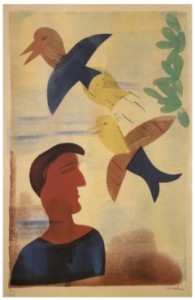 Op 10 april 1945, vlak voor het einde van de Tweede Wereldoorlog, werd de Groninger drukker en kunstenaar H.N. Werkman (1882-1945) door de bezetter gefusilleerd. Was dat omdat hij illegaal drukwerk maakte? Was hij als kunstenaar door het maken van door de nazi’s verboden kunst een gevaar geworden? Of is hij het slachtoffer geworden van de paniek en de chaos van de laatste oorlogsdagen? De reden van zijn dood is nog steeds niet duidelijk. Feit is wel dat hiermee een eind kwam aan het leven van een bevlogen kunstenaar, die vooral na 1945 met zijn kunst een goede, internationale reputatie zou opbouwen.
Op 10 april 1945, vlak voor het einde van de Tweede Wereldoorlog, werd de Groninger drukker en kunstenaar H.N. Werkman (1882-1945) door de bezetter gefusilleerd. Was dat omdat hij illegaal drukwerk maakte? Was hij als kunstenaar door het maken van door de nazi’s verboden kunst een gevaar geworden? Of is hij het slachtoffer geworden van de paniek en de chaos van de laatste oorlogsdagen? De reden van zijn dood is nog steeds niet duidelijk. Feit is wel dat hiermee een eind kwam aan het leven van een bevlogen kunstenaar, die vooral na 1945 met zijn kunst een goede, internationale reputatie zou opbouwen.
Overzichtstentoonstelling: In 2015 herdenkt het Groninger Museum Werkmans zeventigste sterfdag met de overzichtstentoonstelling H.N. Werkman (1882-1945) Leven en werk. In deze tentoonstelling zijn druksels en schilderijen, experimenteel drukwerk en de bijzondere publicaties uit de oorlogsjaren voor De Blauwe Schuit te zien. De eigenzinnige ontwikkelingen in zijn werk laten een kunstenaar zien die zich steeds bleef vernieuwen, en die zich niet hield aan regels die anderen hem oplegden. Hij gaf zijn eigen draai aan de begrippen abstract en figuratief. ‘Het resultaat is naar mijn aard, niet naar een princiep’, schreef hij in 1942 aan een vriend.
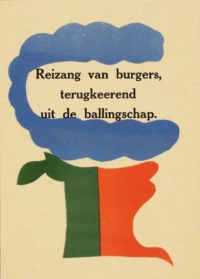 Tegelijkertijd is er een wisselwerking tussen zijn levensloop, de tijd waarin hij leefde en de ontwikkeling van zijn kunstenaarschap. Zijn grafische achtergrond, de economische ontwikkelingen, het kunstleven in Groningen en de rest van de wereld, de oorlogsjaren – het unieke van Werkman ligt in de antwoorden die hij hierop vond met zijn kunst. In de expositie is dit niet alleen te zien in zijn werk maar ook in brieven, portretten, foto’s en familiedrukwerk. Ook is de handpers te zien, waarop Werkman zijn druksels maakte. Het speelgoed-drukpersje waarop de gebroeders Werkman in hun jonge jaren boekjes maakten laat de start van Werkmans loopbaan zien.
Tegelijkertijd is er een wisselwerking tussen zijn levensloop, de tijd waarin hij leefde en de ontwikkeling van zijn kunstenaarschap. Zijn grafische achtergrond, de economische ontwikkelingen, het kunstleven in Groningen en de rest van de wereld, de oorlogsjaren – het unieke van Werkman ligt in de antwoorden die hij hierop vond met zijn kunst. In de expositie is dit niet alleen te zien in zijn werk maar ook in brieven, portretten, foto’s en familiedrukwerk. Ook is de handpers te zien, waarop Werkman zijn druksels maakte. Het speelgoed-drukpersje waarop de gebroeders Werkman in hun jonge jaren boekjes maakten laat de start van Werkmans loopbaan zien.
Boek: Vooruitlopend op de expositie is bij uitgeverij W BOOKS een boek onder dezelfde titel verschenen: H.N. Werkman (1882-1945), Leven en Werk. Tien auteurs nemen in dit rijk geïllustreerde boek de lezer mee door het levensverhaal van Werkman. Het boek bevat zo’n honderd verhalen en een schat aan beeldmateriaal. Werkman komt zelf aan het woord in citaten uit zijn brieven en literaire teksten. Het voorwoord is geschreven door Prof. dr. Henk van Os.
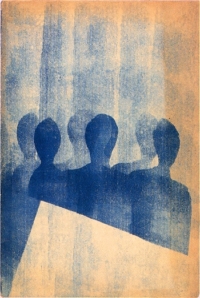 Culturele manifestatie: Het boek en de expositie maken deel uit van een groot cultureel project in 2015 waarmee H.N. Werkman 70 jaar na zijn overlijden herdacht wordt. Er wordt een groot aantal activiteiten georganiseerd op verschillende locaties in de stad en provincie Groningen. Met dans, muziek en theater en in lezingen en publicaties wordt H.N. Werkman als een belangrijke en nog steeds inspirerende kunstenaar voor het voetlicht gebracht.
Culturele manifestatie: Het boek en de expositie maken deel uit van een groot cultureel project in 2015 waarmee H.N. Werkman 70 jaar na zijn overlijden herdacht wordt. Er wordt een groot aantal activiteiten georganiseerd op verschillende locaties in de stad en provincie Groningen. Met dans, muziek en theater en in lezingen en publicaties wordt H.N. Werkman als een belangrijke en nog steeds inspirerende kunstenaar voor het voetlicht gebracht.
Het Werkmanjaar is een gezamenlijk initiatief van Stichting Werkman 2015 en het Groninger Museum.
Het rijk geïllustreerde boek: H.N. Werkman 1882 – 1945. Leven & werk, bevat 256 pagina’s en is verkrijgbaar bij de boekhandel en de museumwinkel voor de prijs van € 29,95
Tentoonstelling: H.N. Werkman (1882-1945) Leven en werk
11 april 2015 t/m 01 november 2015
Groninger Museum
# Meer info website Groninger Museum
fleursdumal.nl magazine
More in: - Book News, Archive W-X, Art & Literature News, De Ploeg, Hendrik Nicolaas Werkman, Werkman, Hendrik Nicolaas
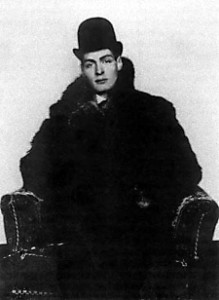
Arthur Cravan
(1887-1918)
SIFFLET
Le rythme de l’océan berce les transatlantiques,
Et dans l’air où les gaz dansent tels des toupies,
Tandis que siffle le rapide héroïque qui arrive au Havre,
S’avancent comme des ours, les matelots athlétiques.
New York ! New York ! Je voudrais t’habiter !
J’y vois la science qui se marie
A l’industrie,
Dans une audacieuse modernité.
Et dans les palais,
Des globes,
Éblouissants à la rétine,
Par leurs rayons ultra-violets ;
Le téléphone américain,
Et la douceur
Des ascenseurs…
Le navire provoquant de la Compagnie Anglaise
Me vit prendre place à bord terriblement excité,
Et tout heureux du confort du beau navire à turbines,
Comme de l’installation de l’électricité,
Illuminant par torrents la trépidante cabine.
La cabine incendiée de colonnes de cuivre,
Sur lesquelles, des secondes, jouirent mes mains ivres
De grelotter brusquement dans la fraîcheur du métal,
Et doucher mon appétit par ce plongeon vital,
Tandis que la verte impression de l’odeur du vernis neuf
Me criait la date claire, où, délaissant les factures,
Dans le vert fou de l’herbe, je roulais comme un œuf.
Que ma chemise m’enivrait ! et pour te sentir frémir
A la façon d’un cheval, sentiment de la nature !
Que j’eusse voulu brouter ! que j’eusse voulu courir !
Et que j’étais bien sur le pont, ballotté par la musique ;
Et que le froid est puissant comme sensation physique.
Quand on vient à respirer !
Enfin, ne pouvant hennir, et ne pouvant nager,
Je fis des connaissances parmi les passagers,
Qui regardaient basculer la ligne de flottaison ;
Et jusqu’à ce que nous vîmes ensemble les tramways du matin courir à l’horizon,
Et blanchir rapidement les façades des demeures.
Sous la pluie, et sous le soleil, et sous le cirque étoilé,
Nous voguâmes sans accident jusqu’à sept fois vingt-quatre heures !
Le commerce a favorisé ma jeune initiative :
Huit millions de dollars gagnés dans les conserves
Et la marque célèbre de la tête de Gladstone
M’ont donné dix steamers de chacun quatre mille tonnes,
Qui battent des pavillons brodés à mes initiales,
Et impriment sur les flots ma puissance commerciale.
Je possède également ma première locomotive :
Elle souffle sa vapeur, tels les chevaux qui s’ébrouent,
Et, courbant son orgueil sous les doigts professionnels,
Elle file follement, rigide sur ses huit roues.
Elle traîne un long train dans son aventureuse marche,
Dans le vert Canada, aux forêts inexploitées,
Et traverse mes ponts aux caravanes d’arches,
A l’aurore, les champs et les blés familiers ;
Ou, croyant distinguer une ville dans les nuits étoilées,
Elle siffle infiniment à travers les vallées,
En rêvant à l’oasis : la gare au ciel de verre,
Dans le buisson des rails qu’elle croise par milliers,
Où, remorquant son nuage, elle roule son tonnerre.
Arthur Cravan poetry 1912
fleursdumal.nl magazine
More in: Archive C-D, Cravan, Arthur, Dada
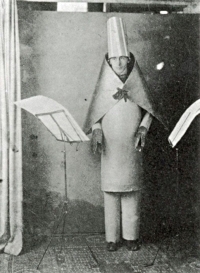 Das erste dadaistische Manifest
Das erste dadaistische Manifest
Dada ist eine neue Kunstrichtung. Das kann man daran erkennen, daß bisher niemand etwas davon wußte und morgen ganz Zürich davon reden wird. Dada stammt aus dem Lexikon. Es ist furchtbar einfach. Im Französischen bedeutet’s Steckenpferd. Im Deutschen heißt’s Addio, steigts mir den Rücken runter. Auf Wiedersehen ein andermal! Im Rumänischen: »Ja wahrhaftig, Sie haben recht, so ist’s. Jawohl, wirklich, machen wir.« Und so weiter.
Ein internationales Wort. Nur ein Wort und das Wort als Bewegung. Sehr leicht zu verstehen. Es ist ganz furchtbar einfach. Wenn man eine Kunstrichtung daraus macht, muß das bedeuten, man will Komplikationen wegnehmen. Dada Psychologie, Dada Deutschland samt Indigestionen und Nebelkrämpfen, Dada Literatur, Dada Bourgeoisie, und ihr, verehrteste Dichter, die ihr immer mit Worten, aber nie das Wort selber gedichtet habt, die ihr um den nackten Punkt herumdichtet. Dada Weltkrieg und kein Ende, Dada Revolution und kein Anfang, Dada ihr Freunde und Auchdichter, allerwerteste, Manufakturisten und Evangelisten Dada Tzara, Dada Huelsenbeck, Dada m’dada, Dada m’dada Dada mhm, dada dera dada Dada Hue, Dada Tza.
Wie erlangt man die ewige Seligkeit? Indem man Dada sagt. Wie wird man berühmt? Indem man Dada sagt. Mit edlem Gestus und mit feinem Anstand. Bis zum Irrsinn. Bis zur Bewußtlosigkeit. Wie kann man alles Journalige, Aalige, alles Nette und Adrette, Bornierte, Vermoralisierte, Europäisierte, Enervierte, abtun? Indem man Dada sagt. Dada ist die Weltseele, Dada ist der Clou. Dada ist die beste Lilienmilchseife der Welt. Dada Herr Rubiner, Dada Herr Korrodi. Dada Herr Anastasius Lilienstein.
Das heißt auf Deutsch: Die Gastfreundschaft der Schweiz ist über alles zu schätzen. Und im Ästhetischen kommt es auf die Qualität an.
Ich lese Verse, die nichts weniger vorhaben als: auf die konventionelle Sprache zu verzichten, ad acta zu legen. Dada Johann Fuchsgang Goethe. Dada Stendhal. Dada Dalai Lama, Buddha, Bibel und Nietzsche. Dada m’dada. Dada mhm dada da. Auf die Verbindung kommt es an, und daß sie vorher ein bißchen unterbrochen wird. Ich will keine Worte, die andere erfunden haben. Alle Worte haben andre erfunden. Ich will meinen eigenen Unfug, meinen eigenen Rhythmus und Vokale und Konsonanten dazu, die ihm entsprechen, die von mir selbst sind. Wenn diese Schwingung sieben Ellen lang ist, will ich füglich Worte dazu, die sieben Ellen lang sind. Die Worte des Herrn Schulze haben nur zweieinhalb Zentimeter.
Da kann man nun so recht sehen, wie die artikulierte Sprache entsteht. Ich lasse die Vokale kobolzen. Ich lasse die Laute ganz einfach fallen, etwa wie eine Katze miaut… Worte tauchen auf, Schultern von Worten, Beine, Arme, Hände von Worten. Au, oi, uh. Man soll nicht zu viel Worte aufkommen lassen. Ein Vers ist die Gelegenheit, allen Schmutz abzutun. Ich wollte die Sprache hier selber fallen lassen. Diese vermaledeite Sprache, an der Schmutz klebt, wie von Maklerhänden, die die Münzen abgegriffen haben. Das Wort will ich haben, wo es aufhört und wo es anfängt. Dada ist das Herz der Worte.
Jede Sache hat ihr Wort, aber das Wort ist eine Sache für sich geworden. Warum soll ich es nicht finden? Warum kann der Baum nicht »Pluplusch« heißen? und »Pluplubasch«, wenn es geregnet hat? Das Wort, das Wort, das Wort außerhalb eurer Sphäre, eurer Stickluft, dieser lächerlichen Impotenz, eurer stupenden Selbstzufriedenheit, außerhalb dieser Nachrednerschaft, eurer offensichtlichen Beschränktheit. Das Wort, meine Herren, das Wort ist eine öffentliche Angelegenheit ersten Ranges.
Hugo Ball (1886–1927)
(Quelle: Hugo Ball: Der Künstler und die Zeitkrankheit. Frankfurt a.M. 1984, S. 39-41 (http://www.zeno.org))
fleursdumal.nl magazine
More in: Ball, Hugo, Dada
 Als ich das Cabaret Voltaire gründete, war ich der Meinung, es möchten sich in der Schweiz einige junge Leute finden, denen gleich mir daran gelegen wäre, ihre Unabhängigkeit nicht nur zu genießen, sondern auch zu dokumentieren.
Als ich das Cabaret Voltaire gründete, war ich der Meinung, es möchten sich in der Schweiz einige junge Leute finden, denen gleich mir daran gelegen wäre, ihre Unabhängigkeit nicht nur zu genießen, sondern auch zu dokumentieren.
Ich ging zu Herrn Ephraim, dem Besitzer der ›Meierei‹, und sagte: ›Bitte, Herr Ephraim, geben Sie mir Ihren Saal. Ich möchte ein Cabaret machen.‹ Herr Ephraim war einverstanden und gab mir den Saal. Und ich ging zu einigen Bekannten und bat sie:›Bitte geben Sie mir ein Bild, eine Zeichnung, eine Gravüre. Ich möchte eine kleine Ausstellung mit meinem Cabaret verbinden.‹ Ging zu der freundlichen Züricher Presse und bat sie: ›Bringen Sie einige Notizen. Es soll ein internationales Cabaret werden. Wir wollen schöne Dinge machen.‹ Und man gab mir Bilder und brachte meine Notizen. Da hatten wir am 5 Februar ein Cabaret. Mde. Hennings und Mde. Leconte sangen französische und dänische Chansons. Herr Tristan Tzara rezitierte rumänische Verse. Ein Balaikida-Orchester spielte entzückende russische Volkslieder und Tänze.
Viel Unterstützung und Sympathie fand ich bei Herrn M. Slodki, der das Plakat des Cabarets entwarf, bei Herrn Hans Arp, der mir neben eigenen Arbeiten einige Picassos zur Verfügung stellte und mir Bilder seiner Freunde 0. van Rees und Artur Segall vermittelte. Viel Unterstützung bei den Herren Tristan Tzara, Marcel Janco und Max Oppenheimer, die sich gerne bereit erklärten, im Cabaret auch aufzutreten. Wir veranstalteten eine RUSSISCHE und bald darauf eine FRANZÖSISCHE Soirèe (aus Werken von Apollinaire, Max Jacob, Andrè Salmon, A. Jarry, Laforgue und Rimbaud). Am 26. Februar kam Richard Huelsenbeck aus Berlin, und am 30. März führten wir eine wundervolle Negermusik auf (toujours avec la grosse caisse: boum boum boum boum – drabatja mo gere drabatja mo bonoooooooooooo–). Monsieur Laban assistierte der Vorstellung und war begeistert. Und durch die Initiative des Herrn Tristan Tzara führten die Herren Tzara, Huelsenbeck und Janco (zum ersten Mal in Zürich und in der ganzen Welt) simultanistische Verse der Herren Henri Barzun und Fernand Divoire auf, sowie ein Poème simultan eigener Composition, das auf der sechsten und siebenten Seite abgedruckt ist. Das kleine Heft, das wir heute herausgeben, verdanken wir unserer Initiative und der Beihilfe unserer Freunde in Frankreich, ITALIEN und Rußland. Es soll die Aktivität und die Interessen des Cabarets bezeichnen, dessen ganze Absicht darauf gerichtet ist, über den Krieg und die Vaterländer hinweg an die wenigen Unabhängigen zu erinnern, die anderen Idealen leben. Das nächste Ziel der hier vereinigten Künstler ist die Herausgabe einer Revue Internationale.
La revue paraîtra à Zurich et portera le nom ›DADA‹. (›Dada‹) Dada Dada Dada Dada.
Hugo Ball (1886–1927)
Quelle: Hugo Ball: Der Künstler und die Zeitkrankheit. Frankfurt a.M. 1984, S. 37-39 (http://www.zeno.org)
fleursdumal.nl magazine
More in: Ball, Hugo, Dada
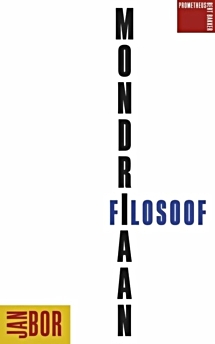 De bekende filosoof Jan Bor heeft een nieuw boek geschreven: ‘Mondriaan filosoof‘. Was Piet Mondriaan geen kunstschilder? Jawel maar hij heeft ook tot het einde van zijn leven filosofische teksten geschreven.
De bekende filosoof Jan Bor heeft een nieuw boek geschreven: ‘Mondriaan filosoof‘. Was Piet Mondriaan geen kunstschilder? Jawel maar hij heeft ook tot het einde van zijn leven filosofische teksten geschreven.
Ook te gast is sterrenkundige Lucas Ellerbroek (1984) over zijn boek ‘De Planetenjagers’ waarin hij de geboorte van een nieuw vakgebied beschrijft en de menselijke worstelingen die daarmee gepaard gaan.
Jan Bor & Lucas Ellerbroek
VPRO Boeken zondag 8 februari 2015
NPO 1, 11.20 uur
# meer info op website vpro boeken
fleursdumal.nl magazine
More in: - Book News, Art & Literature News, De Stijl, Piet Mondriaan
 Arthur Cravan, born Fabian Avenarius Lloyd in Lausanne, Switzerland, was both a poet and pugilist. He was a proponent of Dada and Surrealism.
Arthur Cravan, born Fabian Avenarius Lloyd in Lausanne, Switzerland, was both a poet and pugilist. He was a proponent of Dada and Surrealism.
His most famous fight was a sixth-round knockout loss to the former heavyweight champion Jack Johnson.
He disappeared while attempting to sail a small boat from Mexico to Argentina. Though he most likely perished, numerous unconfirmed sightings of Cravan continued for years, establishing a fanciful legend to the death of Arthur Cravan’s already eventful and colorful life.
Name: Arthur Cravan
Birth Name: Fabian Avenarius Lloyd
Born: 1887-05-22
Birthplace: Lausanne, Switzerland
Died: 1918-11-00 (Age:31)
Height: 6′ 1″ / 185cm
Boxing Record: Arthur Cravan
Global ID: 58873
sex: male
birthdate: 1887-05-22
death date: 1918-11-00 (31)
division: heavyweight
height: 6′ 1″ / 185cm
country: France
residence:
birth place: Lausanne, Switzerland
birth name: Fabian Avenarius Lloyd
won 0 (KO 0) + lost 2 (KO 2) + drawn 1 = 3
rounds boxed 8 KO% 0
Arthur Cravan
(1887-1918?)
HIE
Quelle âme se disputera mon corps?
J’entends la musique:
Serai-je entraîné ?
J’aime tellement la danse
Et les folies physiques
Que je sens avec évidence
Que, si j’avais été jeune fille.
J’eusse mal tourné.
Mais, depuis que me voilà plongé
Dans la lecture de cet illustré
Je jurerai n’avoir vu de ma vie
D’aussi féeriques photographies :
L’océan paresseux berçant les cheminées,
Je vois dans le port, sur le pont des vapeurs,
Parmi des marchandises indéterminées,
Les matelots se mêler aux chauffeurs ;
Des corps polis comme des machines,
Mille objets de la
Chine,
Les modes, et les inventions;
Puis, prêts à traverser la ville,
Dans la douceur des automobiles.
Les poètes et les boxeurs,
Ce soir, quelle est ma méprise,
Qu’avec tant de tristesse,
Tout me semble beau ?
L’argent qui est réel,
La paix, les vastes entreprises,
Les autobus et les tombeaux ;
Les champs, le sport, les maîtresses,
Jusqu’à la vie inimitable des hôtels
Je voudrais être à
Vienne et à
Calcutta,
Prendre tous les trains et tous les navires,
Forniquer toutes les femmes et bâfrer tous les plats.
Mondain, chimiste, putain, ivrogne, musicien, ouvrier, peintre,
[acrobate, acteur,
Vieillard, enfant, escroc, voyou, ange, et noceur,
Millionnaire, bourgeois, cactus, girafe ou corbeau;
Lâche, héros, nègre, singe, don
Juan, souteneur, lord, paysan,
[chasseur, industriel,
Faune et flore.
Je suis toutes les choses, tous les hommes, et tous les animaux !
Que faire?
Essayons du grand air,
Peut-être y pourrai-je quitter
Ma funeste pluralité !
Et tandis que la lune,
Par-delà les marronniers,
Attelle ses lévriers.
Et, qu’ainsi qu’en un kaléidoscope,
Mes abstractions Élaborent les variations
Des accords
De mon corps,
Que mes doigts collés
Au délice de mes clés
Absorbent de fraîches syncopes,
Sous des motions immortelles
Vibrent mes bretelles;
Et, piéton idéal
Du
Palais-Royal,
Je m’enivre avec candeur
Même des mauvaises odeurs.
Plein d’un mélange
D’éléphant et d’ange
Mon lecteur, je balade sous la lune
Ta future infortune.
Armée de tant d’algèbre,
Que, sans désirs sensuels,
J’entrevois, fumoir du baiser.
Con, pipe, eau,
Afrique et repos funèbre,
Derrière les stores apaisés,
Le calme des bordels.
Du baume, ô ma raison!
Tout
Paris est atroce et je hais ma maison.
Déjà les cafés sont noirs.
ne reste, ô mes hystéries!
Que les claires écuries
Des urinoirs.
Je ne puis plus rester dehors.
Voici ton lit; sois bête et dors.
Mais, dernier des locataires,
Qui se gratte tristement les pieds.
Et, bien que tombant à moitié,
Si j’entendais sur la terre
Retentir les locomotives,
Que mes âmes pourtant redeviendraient attentives !
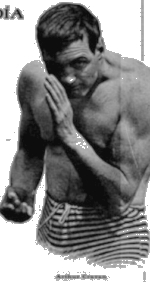
Arthur Cravan poet & boxer
fleursdumal.nl magazine
More in: Archive C-D, Cravan, Arthur, DADA, Dada
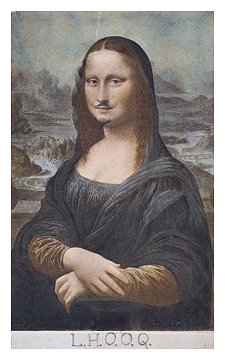
“I think that art is the only form of activity through which man shows himself to be a real individual. Through it alone, he can move beyond the animal stage because art opens onto regions dominated by neither time nor space.”
Marcel Duchamp
“And yet I have drawn people’s attention to the fact that art is a mirage. A mirage, just like the oasis that appears in the desert. It is very beautiful, until the moment when you die of thirst, obviously. But we do not die of thirst in the field of art. The mirage has substance.”
Marcel Duchamp, 1964
MARCEL DUCHAMP: PAINTING, EVEN
UNTIL 5 JANUARY 2015 CENTRE POMPIDOU PARIS
Through a 100-odd works brought together for the first time, the Centre Pompidou is devoting a monograph exhibition to the painted work of Marcel Duchamp. With a completely new and knowingly paradoxical approach, the exhibition is designed to show the paintings of the man who, in common modernist opinion, killed painting.
At the heart of this pictorial work and the discourse of the exhibition, visitors are invited to take a new look at the paintings and drawings that led Marcel Duchamp to create his masterpiece, known as Le Grand Verre, La mariée mise à nu par ses célibataires, même (The Bride Stripped Bare by her Suitors, Even (The Large Glass)), which was begun in 1910 and declared unfinished by the artist in 1923.
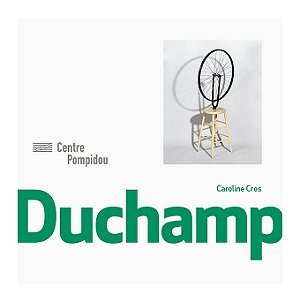 To situate this work in the context of a long and complex creative process, Duchamp conscientiously gathered his paintings together in the hands of a small circle of collectors, and replicated them in his Boîte-en-Valise (Box in a Suitcase) for posterity and those he called «the viewers».
To situate this work in the context of a long and complex creative process, Duchamp conscientiously gathered his paintings together in the hands of a small circle of collectors, and replicated them in his Boîte-en-Valise (Box in a Suitcase) for posterity and those he called «the viewers».
Little-known in Europe, these paintings (now mostly in the Philadelphia Museum of Art) have been reunited at the Centre Pompidou, surrounded by the pictorial, scientific and technical sources, as well those acquired from books, that Duchamp drew on during those crucial and fertile years. The exhibition thus provides new keys for more clearly interpreting and understanding a programmatic work that is also a manifesto.
From humorous drawings to the Nu descendant l’escalier, from mathematics to the theme of the «Bride», from works on perspective to the films of Etienne-Jules Marey and Georges Méliès, from Impressionism to Cubism, and from Cranach the Elder to Edouard Manet and Odilon Redon, by way of Francis Picabia and František Kupka, the circuit takes the public step by step through the construction of one of modern art’s richest and most fascinating works, Le Grand Verre, with the aid of essential and unexpected references. The exhibition reveals Duchamp’s pictorial studies, his Fauve period, the influence of Symbolism, his Cubist explorations, and the nonsense and humour that imbued his work, notably through the artist’s original notes, now in the Centre Pompidou.
It highlights his interest in literature and words, as well as in the optical, physical and mechanical sciences.
With Marcel Duchamp. La peinture, même., the Centre Pompidou helps to write the history of the art of our times, providing a fresh look at the work of one of the most iconic figures in 20th century art.
MARCEL DUCHAMP
PAINTING, EVEN.
24 SEPTEMBER 2014 – 5 JANUARY 2015
CENTRE POMPIDOU PARIS
GALERIE 2, LEVEL 6
# More informatie website Centre Pompidou
fleursdumal.nl magazine
More in: - Objets Trouvés (Ready-Mades), Art & Literature News, Dada, FDM in Paris, Marcel Duchamp
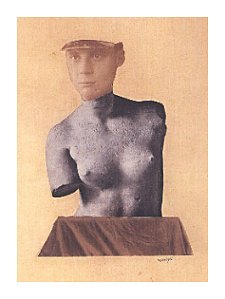
Johannes Theodor Baargeld
(1892-1927)
Du blickst befremdet auf die alten Spuren
Du blickst befremdet auf die alten Spuren
wo Du des immer Neuen Grund
gewähnt, und dich erschreckt der Fund,
und wieder blickst du auf den jungen Schnee der Fluren.
Doch du begreifst nicht, daß vor Jahresstund
du dich am selben Wegkreuz maßest,
und daß du schier ein Jahr vergaßest
und wie so stark sein könne ein zerbrochner Bund.
(1924)
Johannes Theodor Baargeld poetry
fleursdumal.nl magazine
More in: Archive A-B, Baargeld, Johannes Theodor, Dada
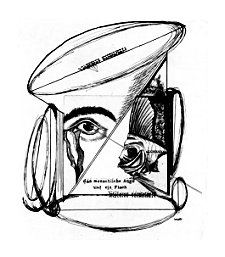
Johannes Theodor Baargeld
(1892-1927)
Du folgst jetzt all den Wegen
Du folgst jetzt all den Wegen,
Die durch dich ziehn.
Sie scheinen Dir gelegen
Mit eignen Mühn.
Du glaubst dem fernsten Winken
Ob es Dir galt?
Die fernen Zinnen sinken,
Doch Du warst kalt.
Schon lang sind Deine Höhen
Im Dunst gelöst.
Es ist bald wie ein Stehen,
Nun Deinen Weg Du weitergehst.
(1923)
Johannes Theodor Baargeld poetry
fleursdumal.nl magazine
More in: Archive A-B, Baargeld, Johannes Theodor, Dada
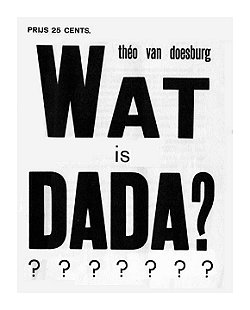 Avond in PERDU rondom Dan Dada doe uw werk!
Avond in PERDU rondom Dan Dada doe uw werk!
Met: Hans Croiset, Jaap Blonk, Matthijs de Ridder, Hubert van den Berg & Geert Buelens
Dan Dada doe uw werk!
Boekpresentatie Uitgeverij Vantilt
Stichting Perdu Amsterdam
maandag 3 november 20:00
Zaal open: 19.30 uur
Entree: Gratis
Ter ere van het verschijnen van de bloemlezing Dan dada doe uw werk! door Hubert van den Berg en Geert Buelens (red.) organiseert Uitgeverij Vantilt in samenwerking met Perdu een avond rondom avant-gardistische poëzie uit de Lage Landen. Matthijs de Ridder gaat in gesprek met Hubert van den Berg en Geert Buelens, waarna (stem)acteur Hans Croiset en stemkunstenaar Jaap Blonk zullen voordragen uit Dan dada doe uw werk! Het programma begint om 20.00 en is ongeveer 22.00 afgelopen.
Piet Mondriaan, I.K. Bonset, Paul van Ostaijen, Herman van den Bergh, Hendrik de Vries, H. Marsman, Pierre Kemp, Kurt Schwitters, Antony Kok, Victor J. Brunclair, Til Brugman, Gaston Burssens, A.C. Willink, Michel Seuphor, H.N. Werkman
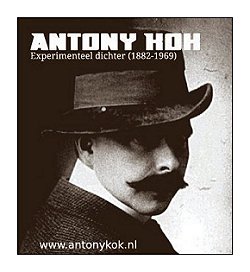 Stichting Perdu
Stichting Perdu
Kloveniersburgwal 86
1012 CZ Amsterdam
Tel: 020 627 62 95
Stichting Perdu – het theater, de poëzieboekhandel en de uitgeverij – is zeer centraal gelegen op Kloveniersburgwal 86, om de hoek bij de Nieuwe Doelenstraat, dus vlakbij het Waterlooplein en Café De Jaren.
# Website PERDU
fleursdumal.nl magazine
More in: - Book News, Art & Literature News, Dada, Doesburg, Theo van, EXPRESSIONISM, DADA & DE STIJL, SURREALISM, Kok, Antony, Kurt Schwitters, Piet Mondriaan, Schwitters, Kurt, Theo van Doesburg, Werkman, Hendrik Nicolaas
Thank you for reading Fleurs du Mal - magazine for art & literature